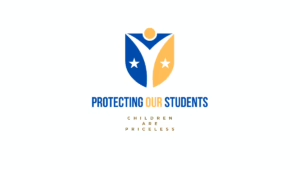 🏫 Protecting Our Students
🏫 Protecting Our Students
Parent & Guardian Fact Sheet: Immigration-Enforcement Concerns at Schools
(Prepared by Robert Jordan — ProtectingOurStudents.org, 2025)
💡 Why this matters
Recent changes in federal policy have raised questions about what might happen if Immigration and Customs Enforcement (ICE) agents appear near or at a school.
While confirmed enforcement actions inside schools remain rare, some families are feeling fear and uncertainty. This guide explains what families should know, how schools respond, and where to find support.
🧭 1. What the law says
-
“Sensitive locations” policy: Schools were once considered off-limits for immigration enforcement. That policy has been weakened, but ICE and the Department of Homeland Security (DHS) still say school visits are exceptional and require high-level approval.
-
No automatic access: Schools are not required to let any enforcement officer inside without a judicial warrant (a warrant signed by a judge).
-
Student records are protected: Under the Family Educational Rights and Privacy Act (FERPA), schools cannot release student information — including immigration status — without written consent or a lawful court order.
🏫 2. What your school will do
Each school district has its own procedures, but most include the following:
-
Verify the officer’s identity and request to see a judicial warrant.
-
Notify district leadership and legal counsel before any action is taken.
-
Avoid sharing student or family information unless legally required.
-
Maintain a calm environment and keep students in class and safe.
-
Communicate with parents or guardians as soon as possible.
💬 3. What you can do as a parent or guardian
-
Stay informed: Ask your school or district what their policy is if ICE or other enforcement agencies request access.
-
Keep emergency contact info up to date: Make sure your child’s school has correct phone numbers and secondary contacts.
-
Reassure your child: Let them know that school is a place for learning, and the adults around them are there to keep them safe.
-
Avoid rumors: Verify any reports of ICE activity through official school or district channels before reacting.
-
Know your rights:
-
You have the right to remain silent and to speak with a lawyer.
-
You do not have to open the door to enforcement agents unless they show a judicial warrant.
-
You have the right to make emergency care arrangements for your children.
-
❤️ 4. How schools can help families
Schools are more than places of learning — they’re trusted centers of community.
Administrators and staff can:
-
Offer language-appropriate information about rights and school policy.
-
Provide safe contact points (counselors, family liaisons).
-
Connect families with community legal resources.
-
Ensure all students — regardless of background — continue learning without fear.
📞 5. Resources and support
-
District Family Support Office: [Insert local contact info]
-
Legal Aid / Immigration Rights: [Insert local organizations]
-
National Education Association (NEA) – School Safety & Immigration Resources: nea.org/immigration
-
Social Workers’ Legal Defense Fund — Navigating ICE Presence: socialworkers.org
🕊️ Final note
Our schools are built on trust, safety, and respect for every student.
Even amid policy uncertainty, we remain committed to protecting our children’s right to learn in a welcoming environment.
For updates and downloadable materials, visit
👉 ProtectingOurStudents.org
— Robert Jordan
Founder, Protecting Our Students
